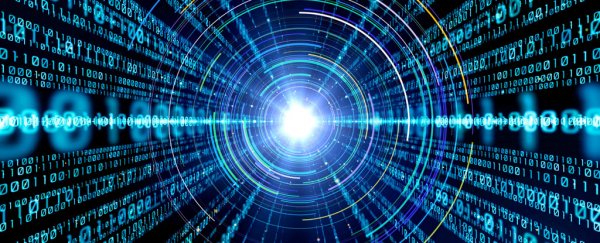We can add suggesting and proving mathematical theorems to the long list of what artificial intelligence is capable of: Mathematicians and AI experts have teamed up to demonstrate how machine learning can open up new avenues to explore in the field.
While mathematicians have been using computers to discover patterns for decades, the increasing power of machine learning means that these networks can work through huge swathes of data and identify patterns that haven't been spotted before.
In a newly published study, a research team used artificial intelligence systems developed by DeepMind, the same company that has been deploying AI to solve tricky biology problems and improve the accuracy of weather forecasts, to unknot some long-standing math problems.
"Problems in mathematics are widely regarded as some of the most intellectually challenging problems out there," says mathematician Geordie Williamson from the University of Sydney in Australia.
"While mathematicians have used machine learning to assist in the analysis of complex data sets, this is the first time we have used computers to help us formulate conjectures or suggest possible lines of attack for unproven ideas in mathematics."
The team shows AI advancing a proof for Kazhdan-Lusztig polynomials, a math problem involving the symmetry of higher-dimensional algebra that has remained unsolved for 40 years.
The research also demonstrated how a machine learning technique called a supervised learning model was able to spot a previously undiscovered relationship between two different types of mathematical knots, leading to an entirely new theorem.
Knot theory in math plays into various other challenging fields of science as well, including genetics, fluid dynamics, and even the behavior of the Sun's corona. The discoveries that AI makes can therefore lead to advances in other areas of research.
"We have demonstrated that, when guided by mathematical intuition, machine learning provides a powerful framework that can uncover interesting and provable conjectures in areas where a large amount of data is available, or where the objects are too large to study with classical methods," says mathematician András Juhász from the University of Oxford in the UK.
One of the benefits of machine learning systems is the way that they can look for patterns and scenarios that programmers didn't specifically code them to look out for – they take their training data and apply the same principles to new situations.
The research shows that this sort of high-speed, ultra-reliable, large-scale data processing can act as an extra tool working with mathematicians' natural intuition. When you're dealing with complex, lengthy equations, that can make a significant difference.
The researchers hope that their work leads to many further partnerships between academics in the fields of mathematics and artificial intelligence, opening up the opportunity for findings that would otherwise be undiscovered.
"AI is an extraordinary tool," says Williamson. "This work is one of the first times it has demonstrated its usefulness for pure mathematicians, like me."
"Intuition can take us a long way, but AI can help us find connections the human mind might not always easily spot."
The research has been published in Nature.
